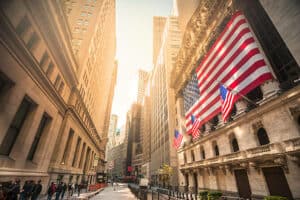While both rates and credit saw an increase in e-trading since last year, according to Coalition Greenwich’s August data spotlights the key takeaway is how development is proceeding in terms of innovation, as opposed to volume.
US corporate bond results saw IG e-trading and HY e-trading both increase year on year, by 2% and 1% respectively, while the rates market saw a 4% increase in dealer-to-client e-trading.
 However, according to Coalition Greenwich, “the story going forward is not one of e-trading growth, per se, but e-trading innovation and evolution”. This comes as credit e-trading remained comparatively similar compared to the previous year, while overall e-trading in US rates in fact declined by 3%.
However, according to Coalition Greenwich, “the story going forward is not one of e-trading growth, per se, but e-trading innovation and evolution”. This comes as credit e-trading remained comparatively similar compared to the previous year, while overall e-trading in US rates in fact declined by 3%.
Trading via request-for-quote (RFQ) is reportedly continuing to grow in line with increased automation – with the market moving towards a modern algo-driven protocol.
“Several conversations with market participants suggest that our estimates for trading via streams are on the low side, with anecdotal data showing buy-side trading against dealer streams (often through a platform) is on the rise,” said Coalition Greenwich, further adding that e-trading development has less to do with volume and more to do with innovation and evolution – “as the market automates, and trading by appointment is increasingly unnecessary”.
Additionally, the report found that trading sentiment in the rates market is on the up, as volatility wains. Last month the US market saw a significant increase in volume, up 27%, while volatility declined 15% year over year.
According to the paper, “with the Fed expected to pause and inflation cooling, volatility might finally be calming down”.
The summer slowdown also has proven benefits, allowing buy-side traders more time to try new trading protocols or platforms.
During this period, despite continued volatility in interest-rate markets, the corporate bond secondary market saw a year-on-year increase of the average daily notional volume (ADNV) traded in July, up 10% compared to last year.
At the same time high-yield volumes fell 11%, as e-trading percentages remained similar to the same time last year, according to findings.
The report explained: “This quiet period has proven good for buy-side traders, who finally have the time to try new trading protocols or platforms. Nevertheless, the last three years have shown us that nothing is a given, and the next big thing for corporate bond trading is anyone’s guess.”
Elsewhere, ETF trading volumes in Q2 2023 declined around 23% from the same time last year, with the ETF-to-cash ratio also on a steady decline since Q1, with the Q2 reading the lowest since 2021.
The report also found that the primary market had remained relatively healthy despite the interest-rate environment. According to Coalition Greenwich “dealer net positions suggest it is the buy side that continues to lend to these issuers, with dealer corporate bond holdings down 30% from June.”
Coalition Greenwich’s August data spotlights cover both US rates trading and US credit trading.